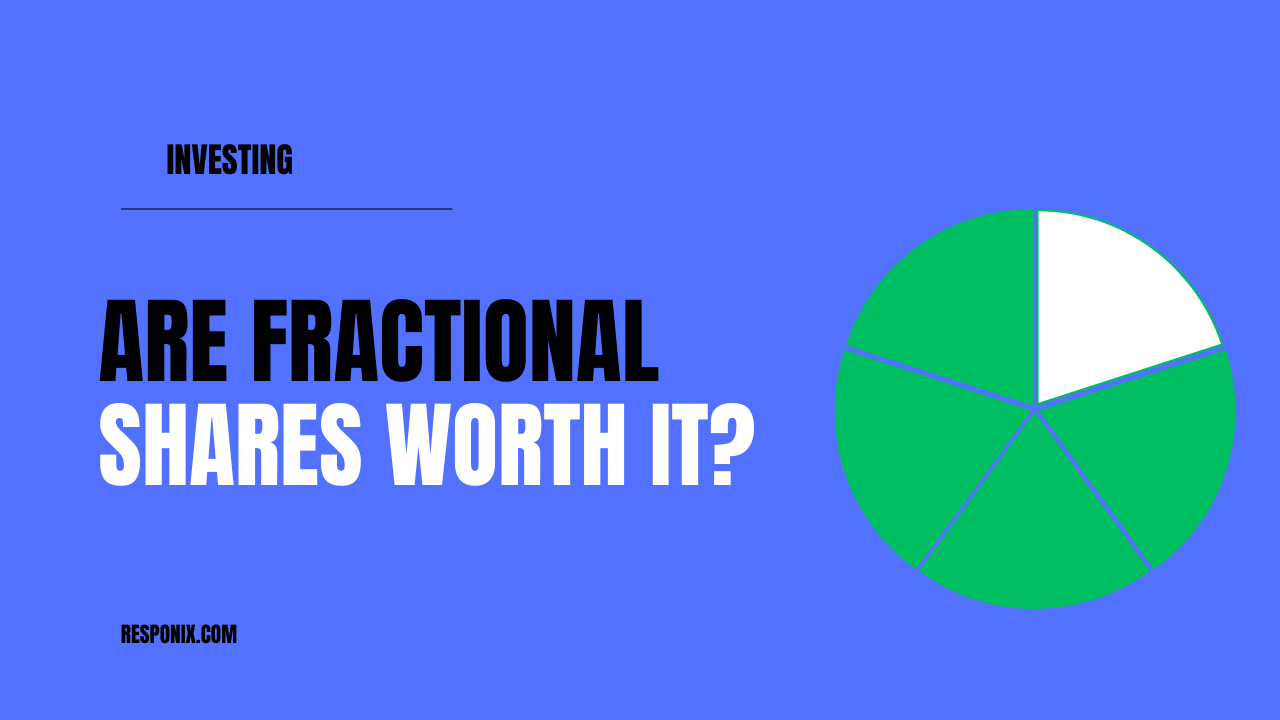Table of Contents
Understanding the Value: Are Fractional Shares Worth It?
In the evolving landscape of modern investing, one question continues to surface for both new and seasoned investors: Are fractional shares worth it? With rising stock prices making full shares of popular companies like Amazon and Tesla prohibitively expensive for many, fractional shares have opened the gates to broader access to the stock market. But is this innovation genuinely empowering for the average investor, or just another passing trend?
Let’s explore the real advantages and potential drawbacks of fractional shares and determine whether they deserve a place in your portfolio.
How Fractional Shares Work: A Quick Breakdown
Fractional shares allow investors to buy a portion of a stock rather than a full share. If a single share of Apple costs $200 and you invest $20, you’ll own 0.1 shares.
Most major brokerages now offer this service, including:
These platforms let users start investing with as little as $1, democratizing access to high-value stocks that once felt out of reach.
The Major Benefits of Fractional Shares
Increased Accessibility to High-Value Stocks
Historically, high share prices excluded many retail investors. Fractional shares allow you to invest in Amazon, Google, or Berkshire Hathaway without spending thousands. This is especially beneficial for those just getting started or those budgeting monthly investments.
Micro Investing for Beginners
Fractional shares are a cornerstone of micro investing a strategy ideal for first-time investors or young adults. Apps like Acorns and Stash let you round up purchases and invest the spare change, building a portfolio passively over time.
Diversification on a Budget
Fractional shares empower investors to diversify their portfolios without needing large sums. Rather than choosing between Apple or Tesla, you can own parts of both. This reduces your overall risk and allows for a balanced investment strategy across sectors.
Reinvestment of Dividends
Platforms that support Dividend Reinvestment Plans (DRIPs) often use fractional shares to reinvest dividends automatically, helping your investments compound faster without leftover uninvested cash.
Potential Drawbacks of Fractional Shares
Limited Transferability
Fractional shares usually cannot be transferred or moved between brokerages. If you switch platforms, you may need to sell your fractional shares and repurchase full ones, which could have tax implications.
Voting Rights May Be Restricted
Most brokerages do not grant voting rights to fractional shareowners. While you technically own part of a company, you may not have a say in shareholder decisions, limiting your influence as an investor.
Liquidity and Order Execution
Because fractional shares are often held by the brokerage and not directly traded on exchanges, the execution of buy/sell orders may not be immediate or at real-time prices, especially during high volatility.
Are Fractional Shares Worth It for Long-Term Investors?
Great for Starting Out
For those just beginning their investment journey, fractional shares make perfect sense. They let you dip your toes in without committing large sums. This aligns well with long-term investment strategies like dollar-cost averaging, where consistent contributions over time matter more than timing the market.
Perfect for Setting Up IRAs and Roth IRAs
Platforms like Fidelity and Vanguard now allow fractional shares within retirement accounts. That means you can fully invest your IRA contribution without any funds sitting idle.
Powerful for Passive Investing
For passive investors using ETFs or index strategies, fractional shares ensure you’re fully invested, maximizing the return potential even on small balances.
Who Should Consider Fractional Shares?
Beginner investors
Those with small budgets, such as students or entry-level workers, will find fractional shares an excellent starting point.
Those seeking diversification
Investors aiming to spread their capital across multiple companies or sectors without needing a large portfolio will benefit greatly.
Dividend investors
Anyone interested in DRIPs or compounding gains through reinvestment will appreciate how fractional shares handle small dividend payments effectively.
Real-Life Example: The Power of Fractional Shares
Imagine a 23-year-old who earns $3,000 a month and can only invest $100 monthly. Through fractional investing, they could own:
- $25 in Tesla
- $25 in Microsoft
- $25 in JPMorgan Chase
- $25 in an S&P 500 ETF
Over time, this strategy not only builds wealth but does so across multiple industries, reducing risk and capturing broad market gains. This democratized approach is exactly why fractional shares are gaining momentum.
How Fractional Shares Fit into Broader Financial Goals
If you’re saving for a long-term goal like a down payment, retirement, or even a vacation, fractional investing can play a big role. Pairing it with other savings strategies like budgeting and side hustles can help you achieve goals faster. For example, see our guide on How to Save for a Vacation for actionable tips.
Expert Opinions and Industry Support
Even financial experts are leaning into fractional investing. According to CNBC and Morningstar, this trend is reshaping how young Americans invest, creating a more inclusive and informed investor base.
The SEC supports the rise of fractional investing as long as platforms maintain transparent disclosures, and many robo-advisors are building this functionality into automated strategies to increase efficiency.
Are Fractional Shares Worth It? The Final Verdict
Yes fractional shares are absolutely worth it for most investors, especially beginners and those with modest budgets. While there are limitations around transferability and voting rights, the advantages of accessibility, diversification, and reinvestment far outweigh the cons.
At a time when financial empowerment is more important than ever, fractional shares provide a legitimate, effective, and compliant path into the markets for millions of people who were previously priced out.
Actionable Takeaways
- Start small, but stay consistent fractional shares work best with recurring contributions.
- Use reputable platforms like Fidelity or Schwab that support automatic reinvestment and low fees.
- Combine with ETFs or diversified stock picks for broader market exposure.
- Think long term fractional investing is ideal for building wealth slowly and steadily.
- Always check platform policies around fees, transfer limits, and voting rights.


